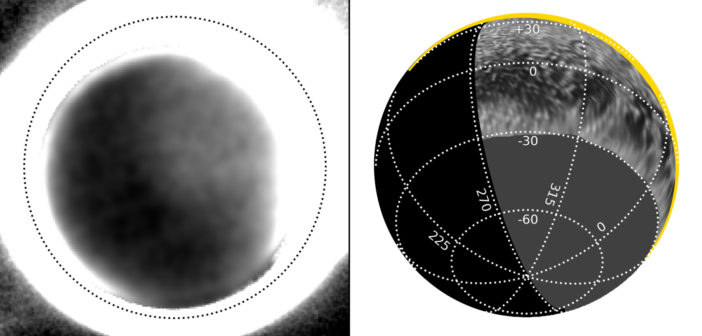
Two versions of the Charon-lit image of Pluto’s southern hemisphere recovered. with different image-processing techniques (top right and bottom left). The top left and bottom right panels show the viewing orientation. [Lauer et al. 2021]
After the New Horizons spacecraft completed its flyby of Pluto in 2015, it turned to snap pictures of the dwarf planet’s wintry southern hemisphere. Although the Sun hasn’t shined directly on latitudes south of 39°S on Pluto in decades, this region does have another source of illumination: sunlight reflected from Pluto’s closest moon, Charon. In a new publication, a team led by Tod Lauer (National Optical Infrared Astronomy Research Laboratory) carefully recovered this Charon-lit image of Pluto, seen in the left panel of the image above. How bright is Charon light? Lauer and coauthors report that it’s just shy of the flux from a first-quarter Moon. In order to retrieve the faint image of Pluto’s southern regions, the team had to remove scattered sunlight that is three orders of magnitude brighter than the light from Charon. With the scattered light removed, Lauer and collaborators could discern a bright area in Pluto’s southern hemisphere that they suggest is an expanse of nitrogen or methane ice.
Citation
“The Dark Side of Pluto,” Tod R. Lauer et al 2021 Planet. Sci. J. 2 214. doi:10.3847/PSJ/ac2743


